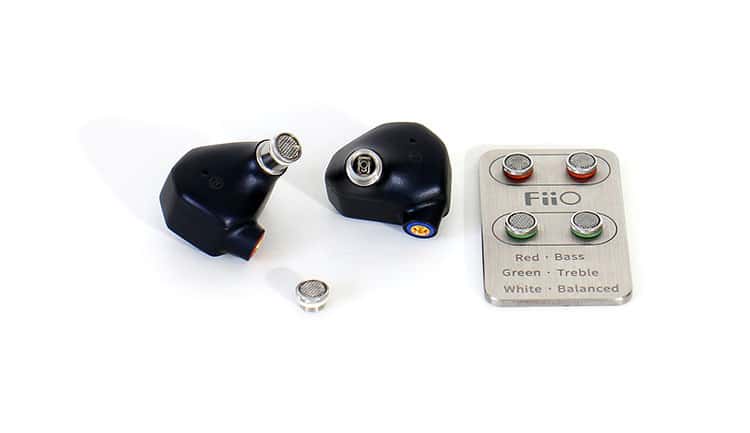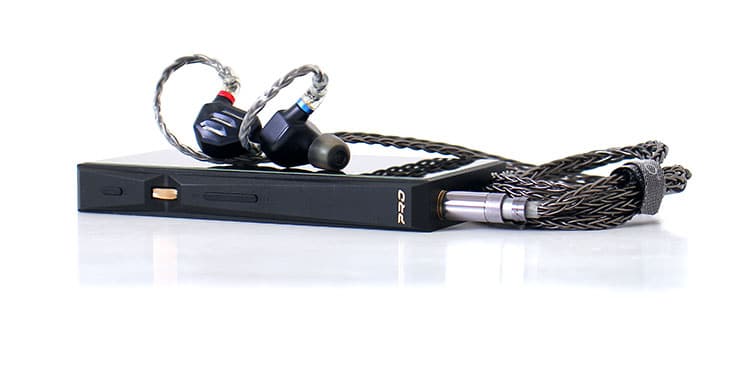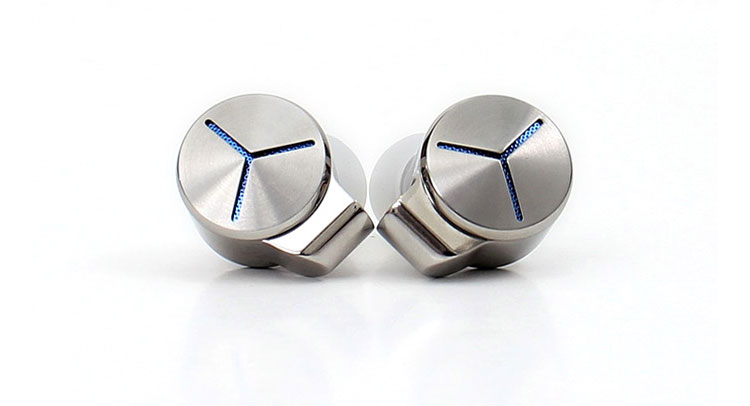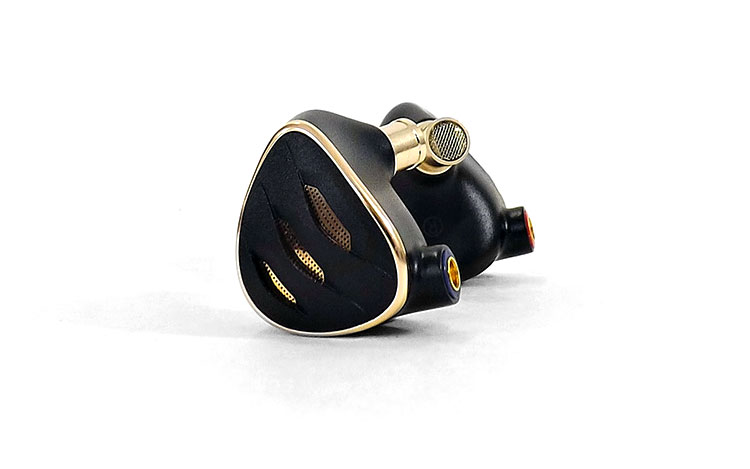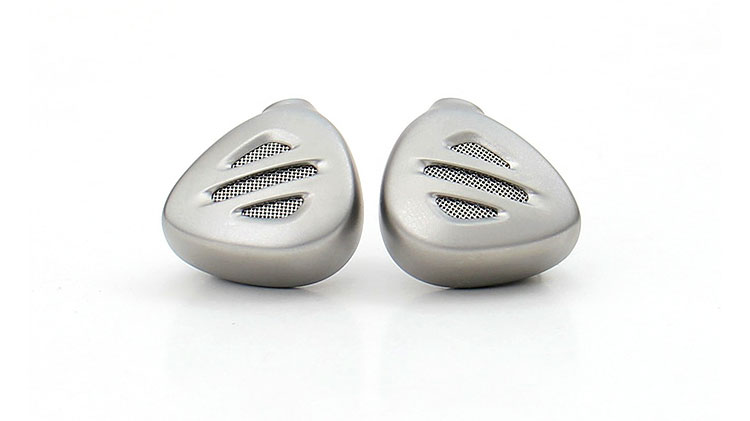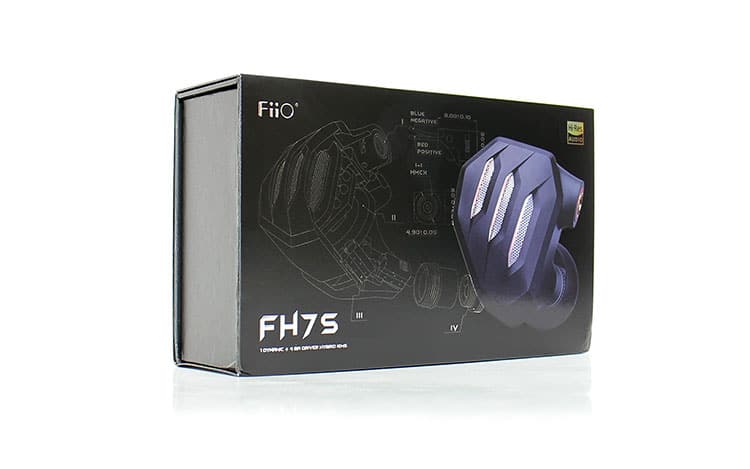Synergy
Tuning Filters
To be honest I did not experiment much with these tuning filters except for a couple of quick listening sessions I had to see if I could spot some obvious differences. I prefer to test IEMs in a neutral setting so I did most of the listening with the neutral, or white color filters.
This feature does add lots of versatility to this set and the effects are noticeable. The green filters are a completely open mesh grille that has a “balls to the wall” tuning in where everything comes through. I didn’t like them much because they intensified everything while simultaneously reducing the bass response.
The other two are restricted with a tri-opening phase plug at the tip and they’re almost indistinguishable visually. However, one good listen and you soon realize that the red filter just quells the highs and leaves everything else alone which generally gives off a warmer sound signature.
My favorite filter overall was the white filter because to me they offered the best balance overall with the red placed in a close second.
You would agree except if you prefer a warm-sounding signature then the red filters might please you more. The green filters were just too forward and intense especially in the upper-frequency regions for my tastes. The highs got hot, to say the least.
Efficiency
The FiiO FH7s are very efficient and you can power them with a whisper. As long as you supply them with a clean source they will sing and give off plenty of joy. If you do opt-in for lots of power they can also handle that.
I tested the FiiO FH7s with a couple of Topping amplifiers that on the balanced side are capable of supplying up to 7.5 watts. They made the FH7s sound gorgeous and they showed a capacity for handling power. The maximum power ratings were not posted but to me, it seems the FH7s can bear the grunt of massive quantities of power.
Pairings
I also tested the FH7s with FiiO’s dongle DACs. All three models were tested which include the KA1, the KA2, and the KA3. Neither made the FH7s feel starved for power. Quite the contrary. They all paired well with the FH7s and made formidable listening portable combos.
I also took them outside with an iFi Audio iDSD Gryphon and went balanced exclusively. The Gryphon had more than enough juice to push the FH7s even to ear-splitting levels if I so desired. The FH7s did benefit a lot from the 3D space feature since it added a smear of height to the overall stage panorama.
Isolation
You would think that the FH7s with an open-back design would be a poor performer as far as isolation and one would also expect sound leakage which in certain urban settings would be less than desirable, for example in a setting where you have to use public transportation or just have someone closeby.
I was pleased to find that the FiiO FH7s do well in isolating once you select the right tips with the best ear canal seal possible. You could hear a slight splash of treble leakage but the person would have to be uncomfortably close to hear it.
On a side note and before I forget, the FH7s have a good ability to not change much as far as the overall tonality with different tip selections, or at least to my ears. They seem impervious and somewhat neutral and function well with most tips and only small nuances and changes could be noted.
Select Comparisons
FiiO FA7s
$339.99
Technical
I know the ideal comparison would be against the FH7 but they’re out of my reach since I do not own a pair so I must apologize.
I heard them before and do remember their signature some and can say that the FH7s seem to be a slightly improved model. The bass response demonstrated better control while the high frequencies seem to have been cleaned up some.
We could however talk about the balanced armature counterpart to the FH7s which is the FA7s. Their model numbers will seem almost identical if you look too fast. Their differences are most apparent in their design rather than in their model number.
Sporting an all-balanced armature driver array that consists of a 6-driver combo in a 2x2x2 configuration. Two are used for the bass, two for the midrange, and the other two for the treble response. FiiO went with a Knowles 31619 bass array, another 33518 dual driver array for the treble, and a custom array for the all-important midrange.
So it’s safe to say that FiiO focused the FA7s IEM tuning aspects on vocal and midrange production with good bilateral frequency extension but with a generally balanced tuning. Plus it seems they also focused on the soundstage more so compared to the FH7s.
Design
Here is another area of contrast that is obvious the second you look at the FA7s. These two IEMs could be labeled as two IEMs from different makers and you would go along if you weren’t in the know as we all are.
The FiiO FA7s shell has an all-metal cylinder-shaped body with a stem and a small hump into which the MMCX connector is nestled into. The backplate is vented but it has a different design and function since it only seems to be a back pressure relief vent due to the absence of a dynamic driver.
All the other aspects, particularly with the packaged accessories are similar including the stock cable with an assortment of swappable plugs, minus the 2.5mm, the MMCX tool, a nice assortment of tips, and a nice storage case. But you still do not get the HS18 tips.
Performance
The FA7s to me seem warm sounding but neutral-centric. The bass extension seems to demonstrate an early roll-off point which seems to start dropping quickly at below 45Hz. The warmth comes from a slight bloom in the midbass area which seems to be a wider peak or hump in that same 80Hz region.
The bass does lack the impactfulness and body present in the FH7s but that gives room for the midrange to shine through in a welcoming manner. So you trade a bit of bass impact for a more open window into the midrange.
One particular aspect of the FA7s I enjoyed more compared to the FH7s is the soundstage size and its technical ability in that area. The soundstage seems wider and the vertical aspect seems better presented here. I guess it’s another tradeoff for that bottom-end early roll-off. Two for one is not that bad, is it?
FiiO FH5s
$259.99
Technical
The FH5s is another popular model since it serves up a lot for a smaller monetary commitment. With a long list of included accessories and a hybrid driver configuration, within its price point, it seems like a handsome offer.
It offers a downscaled 12mm Beryllium-coated PU dome dynamic driver with a polyurethane polymer surround gasket and an N52 1.5-tesla magnet. Wow, that was a mouthful. There are other drivers involved but with a small twist from the norm, however.
The twist within the driver array is in the fact that the midrange driver is a second dynamic driver, a downsized 6mm dynamic driver. So the FH5s have two dynamic drivers.
The hybrid title comes from the use of a 30017 dual-balanced armature driver on high-frequency duty. So we have here a dual dynamic driver and dual BA driver configuration which even today is quite unorthodox.
Design
Can I quote James Franco in the movie “The Interview” when he said, “Different, but same, same”? The main shell seems to have a similarly shaped body but the vents were reworked and took on a different appearance. The center brass ring was also removed on the FH7s and veered from the three-piece design to a two-piece shell design.
The color scheme is also different. Black and gold tones dominate the surface of the FH5s. There’s also a set of microswitches on the surface of the IEM shell. These three switches replace the output nozzle filter feature in that each switch affects either the bass response, the treble, or the midrange response.
This feature has pros and cons, however. You could change the overall tonality with a flick of a switch which is more convenient than the tediousness of replacing those nozzle tips. I just hope I never cross-thread one. Then again, I hope none of those microswitches become intermittent either. See what I mean?
Performance
The FH5s seem to portray a midrange dip which makes them sound closer to a V-shaped IEM but the biggest issue I found was the intensity of the treble response which in my opinion needed a reduction of about five decibels minimum.
The 30017 Knowles tend to need some taming so with the treble switch in the high position the treble became almost intolerable to me. But, if you raise just the bass and midrange switches to the high position then the overall sound signature to me seemed better balanced and with a more neutral character.
The FH5s 12mm bass driver seems to have lots of impactfulness and more so compared to the FH7s but clarity, definition, and the overall cleanliness bar were all raised on the FH7s, especially in the high-frequency department.
FiiO FH9
Price $599.99
Technical
The big boy hybrid from the FiiO IEM lineup is the seven-driver FH9 hybrid. This IEM incorporates all the tweaks and tricks FiiO has picked up over the years. The same 13.6mm second-generation driver is used here along with S Turbo tech plus six additional balanced armature drivers for a total of seven.
The six BA drivers are all custom composite units including a set of SWFK-31736 Knowles tweeters capable of easily reaching 40kHz. All other drivers sit behind a custom 4-way crossover.
Design
The FH9 body style is rather simplistic and almost monotone. The color scheme is silver on silver. Three vents deal with back pressure and visually seem to employ larger vents over the other rear-vented FiiO IEMs including the FH7s.
Now, in all honesty, I would not consider any of these IEMs open back because they seem to all isolate well or better than expected. They also leak very little and seem to demonstrate an almost closed-back characteristic.
The stock cables are similar and just a minuscule change in the color scheme was implemented which follows a more silver-centric theme to match the FH9’s appearance. But the FH9 comes with three swappable connectors instead of two.
Performance
These two IEMs perform very similarly in the lower regions and it was expected since they both use the same 13.6mm dynamic driver behind FiiO’s S Turbo technology implementation within a similarly shaped shell. The midrange response seems similar as well.
What you get with the FH9 is what’s missing from the FH7s, particularly with the soundstage accuracy and height production. The overall soundstage presentation seems more realistic and better placement can be felt and heard.
Other than that, these two siblings are eerily close to each other and the lines are blurred here on what direction one should go, all out with the FH9 or settle for a high percentage of that performance at a reduced cost.
Our Verdict
This is one of those IEMs that disobeys the lines of performance-to-price ratios. The FiiO FH7s is an excellent IEM that has an almost ideal tuning for my taste.
A tight, well-defined bass, a smooth midrange that envelopes the listener and never becomes harsh plus some crisp but forward treble that rarely becomes strident. A fun tuning indeed.
Perhaps the only lacking aspect would be the lack of the 2.5mm balanced connector and the lack of vertical presentation within the 3D staging panorama.
But if you enjoy a stage-like sound or a speaker-like presentation that gives off a good phantom center stage with lots of separation between musicians you will probably not have anything to complain about here.
Other than that, what else can I say about an IEM with such a complete set of accessories, robustly constructed with good connectivity and sound quality that’s almost on par with their top-of-the-line model?
These particular selling points cannot be overlooked and I think this IEM is gonna be an easy sell.
FiiO FH7s Technical Specifications
- Drivers: 1 13.6mm dynamic and 4 balanced armatures
- Frequency Response: 10Hz to 40kHz
- Impedance: 18Ω @1kHz
- Sensitivity: 104db/mW @ 1kHz
- Audio Plugs: 3.5mm, 4.4mm
- Earphone Connector: Expanded MMCX
- Cable: 8 strands totaling 152 wires of high purity silver plated monocrystalline copper
- Cable Length: 1.2mm
- Unit Weight” about 9.0 grams excluding cable


